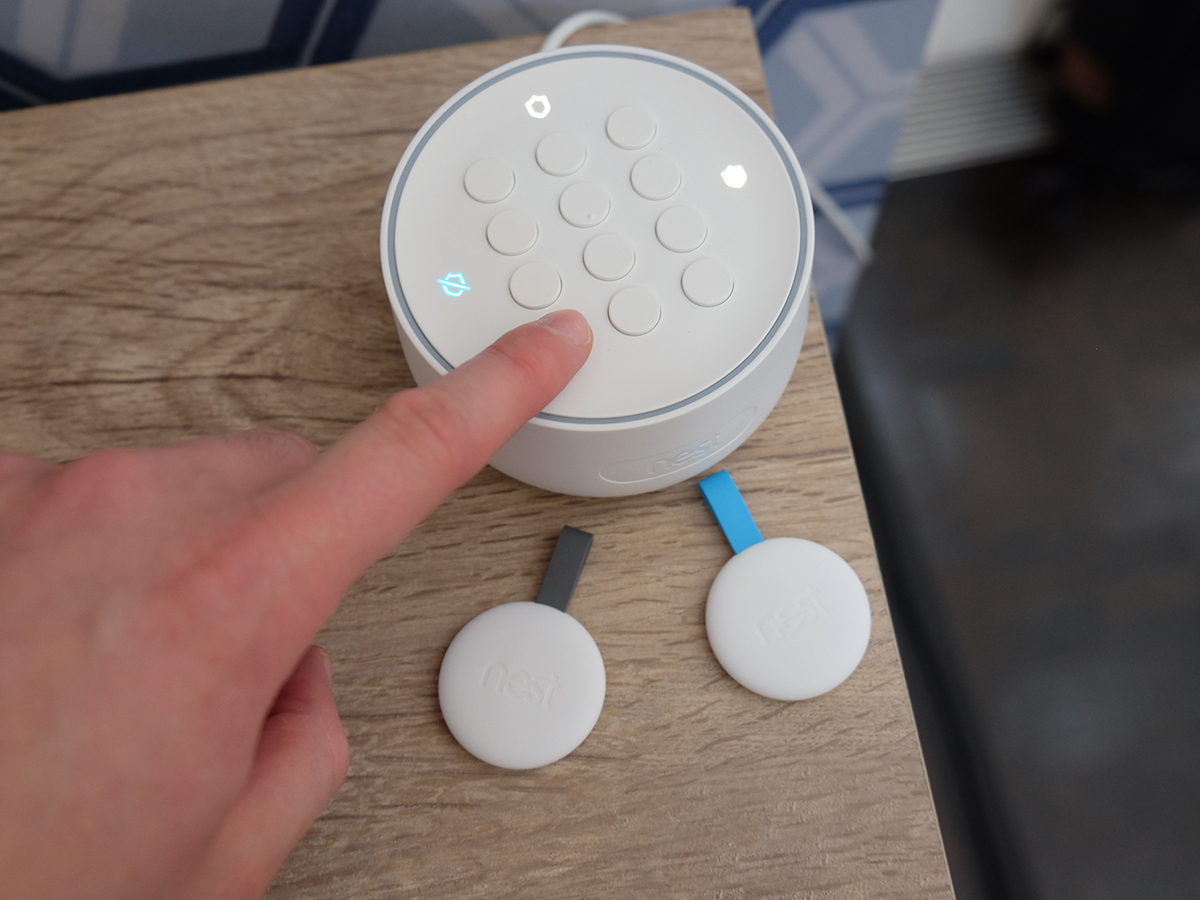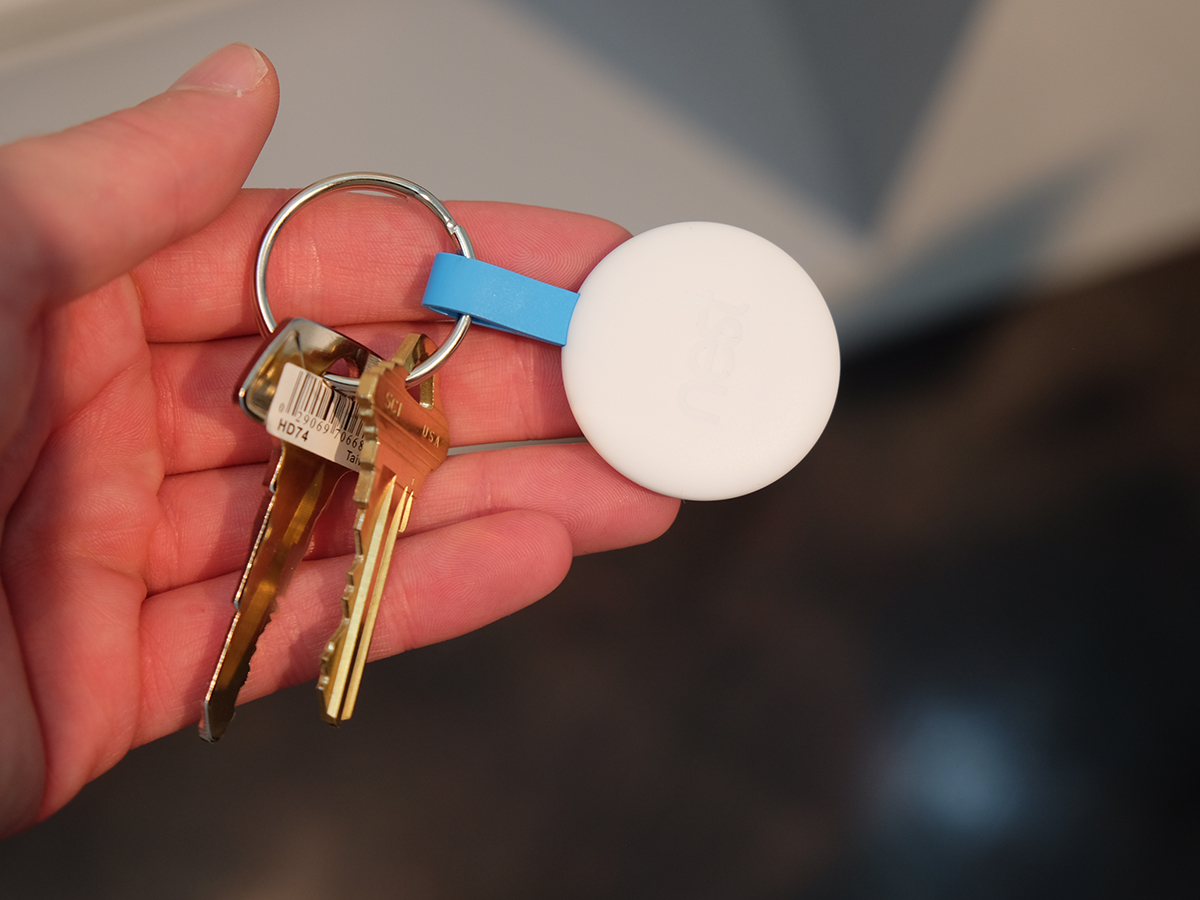Nest Secure hands-on review
The smart home titan's new security system is looking good so far

After finding smart home fame with a smoke alarm and thermostat, it was only a matter of time before Nest introduced its own take on the home security system. And sure enough, at a launch event in San Francisco this week the world got its first look at Nest Secure.
With a combination of three main components – Nest Guard (the centrepiece), Nest Tag and Nest Detect – Nest Secure is designed to make sure nobody successfully breaks into your house and gets away with it. As is the case with everything Nest, you control the whole system through its app, relying on motion sensors and secret codes to inform you straight away about any suspicious activity.
It’s a big upgrade on the decidedly dumb alarm you’ve got right now, but only if you’re willing to drop $499 for the starter pack. So how does it work? We’ve seen it in action for all the burglar-proof details.
Design: alarmingly attractive
Security systems are usually pretty hideous things made of cheap plastic, sitting on your wall just waiting to be tricked into action by a rogue spider. Still… nobody needs a sexy alarm, right? Nest reckons otherwise.
Chief amongst its crew of sleek white portectors is the Nest Guard. Puckish in form (think the Echo dot, but blown up slightly), it sits on a surface rather than attaching to your wall. On the top you have an LED ring and a keypad of entirely plain buttons that illuminate with numbers when you need them to. The thing is packed to the brim with tech – motion sensors, NFC, Bluetooth LE, WiFi, LTE, backup battery, speaker – but on the surface it’s all about minimalism. So far, so very Nest then.
Next we have the Nest Detect, an adhesive magnet and sensor that you place next to windows and doors. It looks a bit like a lipstick, with a button at the bottom that you click to notify the system it’s you opening and closing things, rather than an intruder. These Detect sensors have been designed to blend into the background, and Nest assures us they’ll stick to pretty much any surface without issue.
The final piece of the puzzle? That’s the Nest Tag, which resembles two giant white chocolate buttons smashed together. You get two Tags with the Secure’s starter kit and they’re best used as keyrings so their embedded NFC chips allow you to arm and disarm the Nest Guard as you come and go.
Combined, all these devices are well thought out and just feel more intuitive in action than a traditional home security setup. It also helps that both Nest Detect and Tag are built to last. Silicon parts protect the sensors from heat damage, while the little key fob won’t be troubled by a dunk in the sink.
Usability: on guard at all times

Once you’ve established your new security system, it works exactly as you’d expect it to. When leaving the house, you can arm the Secure by pressing a button or – the easiest way – by tapping your Nest Tag just before you walk through the door. It’s the same deal for disarming, only this time anyone without a Tag handy will be asked to enter the code in a period of time that you can determine. Knowing how much children enjoy wildly mashing buttons, Nest also gives you the option of requiring a passcode for arming. Wise.
I had a good play around with the various input options and they all worked perfectly. The ability to deactivate the alarm with the Tag is more convenient than entering a code, not to mention a godsend for anyone prone to forgetting theirs. I also really like how the keypad only appears when you’re unable to tag.
Nest is great at making its products talk to one another, and with Nest Secure that communication is key. The main hub is capable of motion detection for a distance of 10ft, or 15ft for Nest Detect. You can tell the Nest Guard not to react to movement (more on that in a bit), while the Quiet Open feature lets you temporarily bypass the alarm by pressing a button on the Detect before you make your silent exit. But otherwise failure to enter the code in the allotted time (anything from 30 seconds to five minutes) will result in the alarm going off.
And what an alarm it is. Set at 85 dB (the volume can’t be altered), I was assured by a member of the team that "it’s pretty uncomfortably loud”. Confirmation came when someone in the room accidentally triggered it. Put it this way: burglars aren’t going to hang around in this racket. It should be noted that unless you invest in one of Nest’s cameras, you won’t be getting the most out of this technology. Alerts about strange movements in your house are much more useful when you can see exactly what’s happening. Add a Nest Cam IQ into the mix and an already pricey security system just got a whole lot more expensive.
Is the outlay worth it in the long run? Nest obviously thinks so, and their research seems pretty conclusive that would be wrong-doers are put right off by this stuff.
App: check your home from your phone

If you’ve ever used a Nest Product you’ll know that just as important as the hardware itself is the app it syncs with. It’s no different here.
When Nest Secure senses something it deems to be suspicious it sends you a notification. If the alarm is activated and you have a Nest Cam IQ you’ll see a live video stream at the top of the screen. If you need to call the police you can do it straight from the app. Pretty standard.
In the app you’re given a detailed log of info about who came and went, as well as the sensors that detected them. In the demo I saw, much of that screen was dominated by alerts about people tagging in and out at various times. At times it feels like an excessive amount of information, but with home security I guess you can’t be too observant. The app lets you arm and disarm the Nest Guard remotely, and if you forget it will send you a reminder. Should your Wi-Fi goes down the devices can still communicate through Nest’s clever Weave functionality. You’ll received an offline notification in the meantime.
How reliable the system is on a day-to-day basis is impossible to judge right now. I’d have to live with it. What I did see, however, was the various ways you can alter the system in app. Home and guarding mode, for example, is for when you’re in the house. This setting ignores motion, and by pressing a button on the Nest Detect you’re telling it that the sudden opening and closing of doors or windows isn’t reason for it to let off its wall-shaking screech. Away and guarding, on the other hand, is for when nobody is expected to be in. That’s when the motion detection kicks in. You can also set timeframes during which the system is deactivated. Useful for families with cleaners or dog walkers.
Nest Secure Initial Verdict

There’s no doubt that Nest Secure is a sizeable upgrade on the ancient alarm systems most houses have now. But there’s no getting away from it: it’s also an expensive one, especially if you factor in a camera.
That said, it’s really easy to imagine these devices making a real difference to people’s lives. We’re all swamped with notifications on a minute-to-minute basis, but I can’t see anyone being annoyed at their phone telling them someone is trying to climb through the window. Another Nest employee told me he just likes to know that his kids have arrived home safe from school. Their tags alert him to that.
I wasn’t able to test a lot of its features, but the tagging system is great, and I like how you can seamlessly customise the level of security. It helps that the products are so well designed, too. We’ll bring you a full review of Nest Secure when it arrives in November, but if smart surveillance is something you’re seriously considering, it’s looking like a safe bet.






